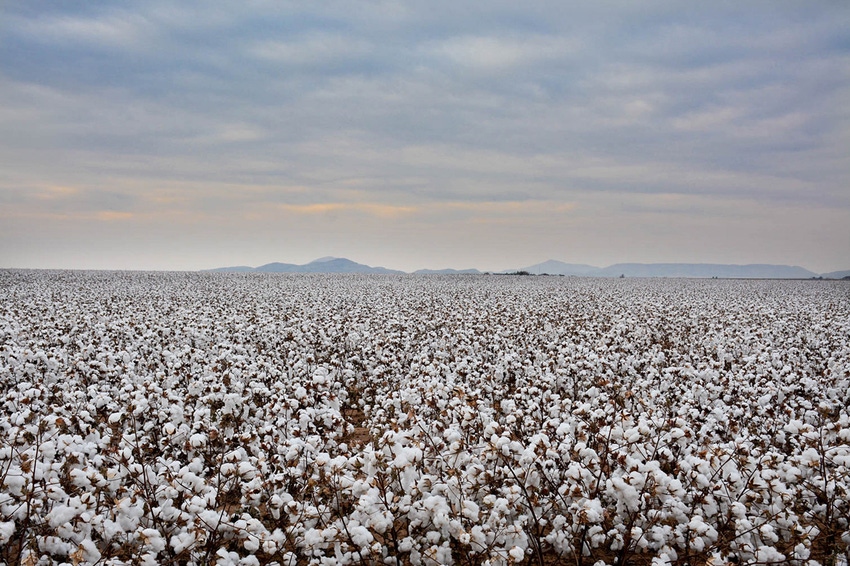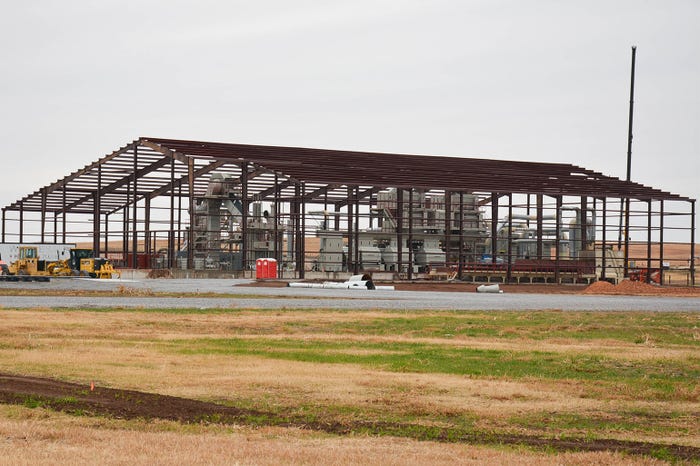
Cotton ginning in Carnegie, Oklahoma, is well-underway but thanks to record yields, it’s only just beginning.
Carnegie Cooperative Gin manager Jeannie Hileman says she is expecting to gin more than 100,000 bales this season, a record that will likely keep the gin running until March.
“We’re having an extra-ordinary good crop this year,” says Hileman. “Of what we’ve ginned so far, we have had way above-normal grades as well as above-normal turnouts.”
Gin office manager and Hileman’s daughter, Sadie, says there is so much cotton coming in, “We can’t gin it fast enough!”
According to the November crop report by the USDA National Agricultural Statistics Service (NASS), Oklahoma has 555,000 acres of cotton this year. “That’s a big crop for us and it’s about twice as big as normal,” says Dr. Randy Boman, Oklahoma State University Extension State Cotton lead, Altus, Okla. “It’s the most planted in standing acres since 1981.”

Carnegie Gin Manager Jeannie Hileman
October’s NASS report put Oklahoma at 848 pounds or 980,000 bales. As for the November estimate, Boman says the USDA increased the pounds to 951, which translates into 1.1 million bales. “It’s just unbelievable that we have that much out there. If we make that, it will be the biggest crop produced in Oklahoma since 1933.”
While 60 percent of the cotton ginned at Carnegie is irrigated, dryland yields appear to be the big winner of 2017. “The yield on my dryland has just really blown us away this year. Some of it is as good as my irrigated,” says Hileman, who’s in her 28th ginning season at Carnegie. “Back in the day, you thought a bale-to-the-acre was good. Most all of this is making two bales-to-the-acre and we’ve even had reports of three [bales] on the dryland.”
But it’s not all “peaches and cream,” for some of the state’s dryland acres, reports Boman. “We’ve got some dryland that was probably planted up against the insurance deadline, which for us is typically June 20. Some of those fields dried out, or they didn’t even come up because it was too dry. They didn’t get any rain until the end of June, beginning of July,” explains Boman, who says there are several thousand acres of this cotton out there that were also affected by the 27-degree temperatures October 26. “It’s been a really good year for a lot of people, but the fly in the ointment is that late dryland that got toasted by that early freeze.”
As far as irrigated acres, Hileman says she’s seeing three-bale plus. “We may have a couple of farms make four bales-to-the-acre. Here, we’ve got plenty of water so that’s always a good thing.”
Overall, Hileman credits good ground, adequate moisture and cooperative weather for the increased cotton quality and yields, though cool, cloudy August weather raised some concerns. “I’ve had a couple of farms with low micronaire and I was afraid there was going to be a lot of it. But there really hasn’t been that much this year.”
Boman also attributes the success of the state’s crop to technologies and the harvester breakthrough of the round-module cotton picker, which features an onboard module-building system.
“What we have is a perfect storm of events. Technologies, both in traits, varieties, super high yielding varieties with super high quality. And we’ve got the harvester breakthrough,” says Boman. “And then we’ve been blessed by the good Lord for the last three years with this outstanding precipitation. It’s not unusual to hear, ‘I’m going to make three bales in this dryland field.’ That’s a money maker. That’s 65 cents for those guys. So, it’s a perfect storm is what I call it.”
See Speculation, faith redeem cotton gin to record-breaking season. http://bit.ly/2iyUgNV
In the last two years, Hileman says she’s witnessed an increase in round modules on her yard. “Everyone is excited about the new round bales as far as how well the cotton keeps. If you can get it off the stalk then you’ve got it preserved,” explains Hileman. “When you know that you are going to have to leave it to sit, it just keeps so much better in a round bale than a square.”
With the challenged harvesting infrastructure due to the high yields and cotton acres, Boman says some harvesters are taking advantage of the abundance by purchasing the round-module cotton pickers, which can cost anywhere from $700,00 to $900,000, and doing custom work to help pay for them. “So, that’s a real plus,” he says.
Carnegie Gin, which began its season in mid-October, gins 20 to 25 bales per hour. But once its new three-stand gin is completed, with a 45-bale per hour capacity, Hileman will have an extra plant to aid in ginning this record 2017 crop. “We will gin until March, even with new gin. There’s a lot of bales out there to be ginned—we’ve had seasons through March before, but we didn’t gin as many bales as we will this year.”

New Carnegie Gin under construction on 80 acres north of town.
Hopes are that the new gin, located north of Carnegie on 80 acres, will be operational by Christmas.
Since 2015, Carnegie has doubled the amount of bales it has ginned, from 36,897 bales in 2015 to more than 61,500 bales in 2016. Hileman expects to almost double that number again this year. Growers who bring their cotton to Hileman’s gin come from as far as Beaver County, which is “160 miles, one way.”
As of November 16, Carnegie has ginned 12,221 bales. Aside from the price of cotton, the Carnegie ginner says her growers couldn’t be happier with the 2017 cotton crop. “The producers are all excited. We’ve had some good weather to get it out and we are probably close to 50 percent harvested,” she says.
About the Author(s)
You May Also Like






